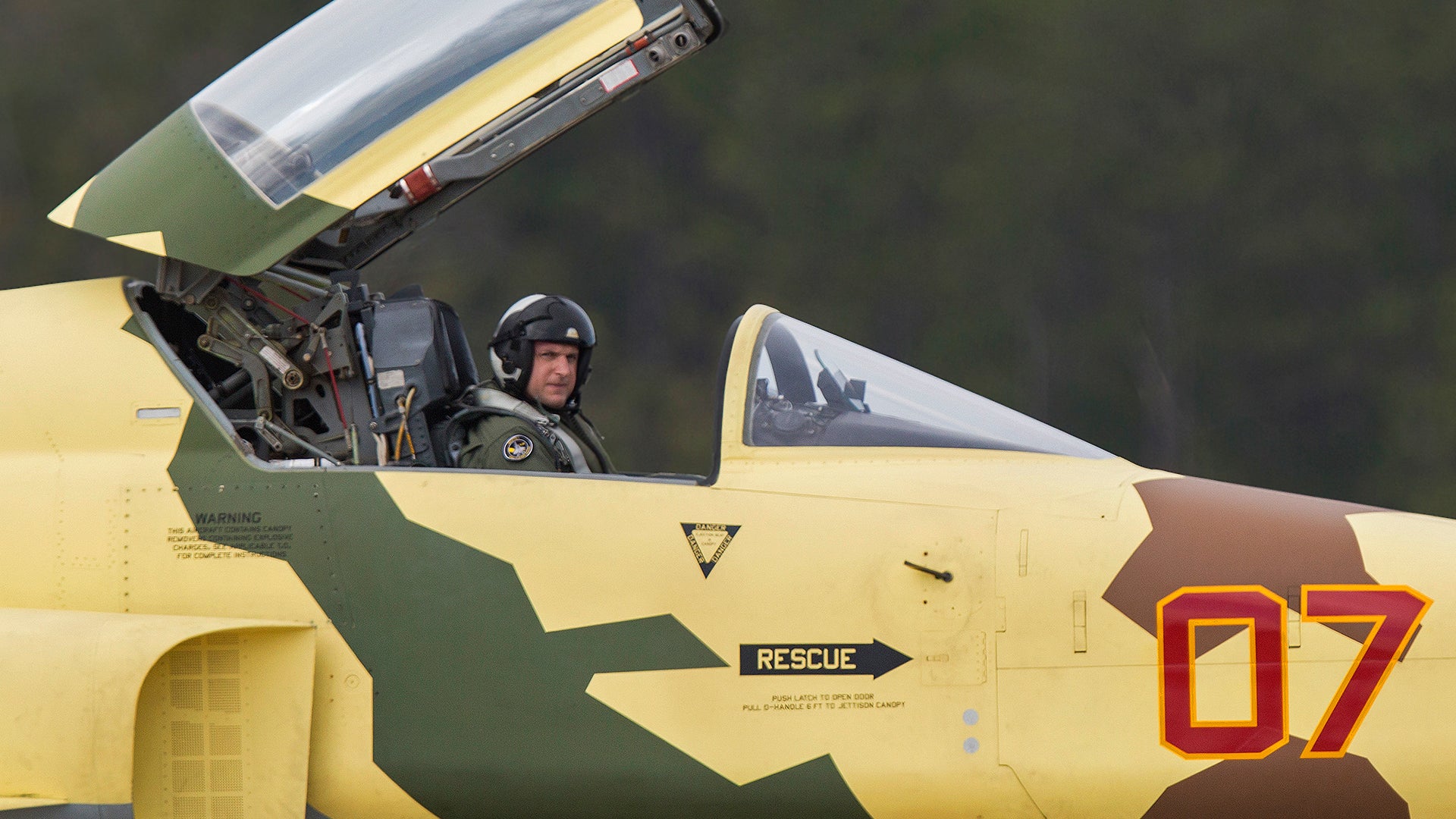The USMC’s small fleet of a dozen F-5N/F aggressor aircraft flown by VMFT-401 “Snipers” out of MCAS Yuma are receiving a major upgrade in capability. A so-called “Red Net” tactical and situational awareness data link system is being installed on the jets. The system uses a commercially available tablet-kneeboard display, which is significantly more flexible and cost-effective than integrating a data-link display into the F-5N/F’s cockpit avionics, which are largely made up of “steam” gauges along with a recently upgraded radar and navigational display.
The upgrade was discussed in the recently released Marine Corps 2019 Aviation Plan. It states:
“A recent upgrade to the F-5 is a red-net data link solution that provides requisite safety and tactical awareness through securing a Commercial Off The Shelf (COTS) kneeboard tablet that has been funded and is fielding. Upgrading EA [electronic attack] capabilities in the future is also a priority within the adversary community and Program Office.”
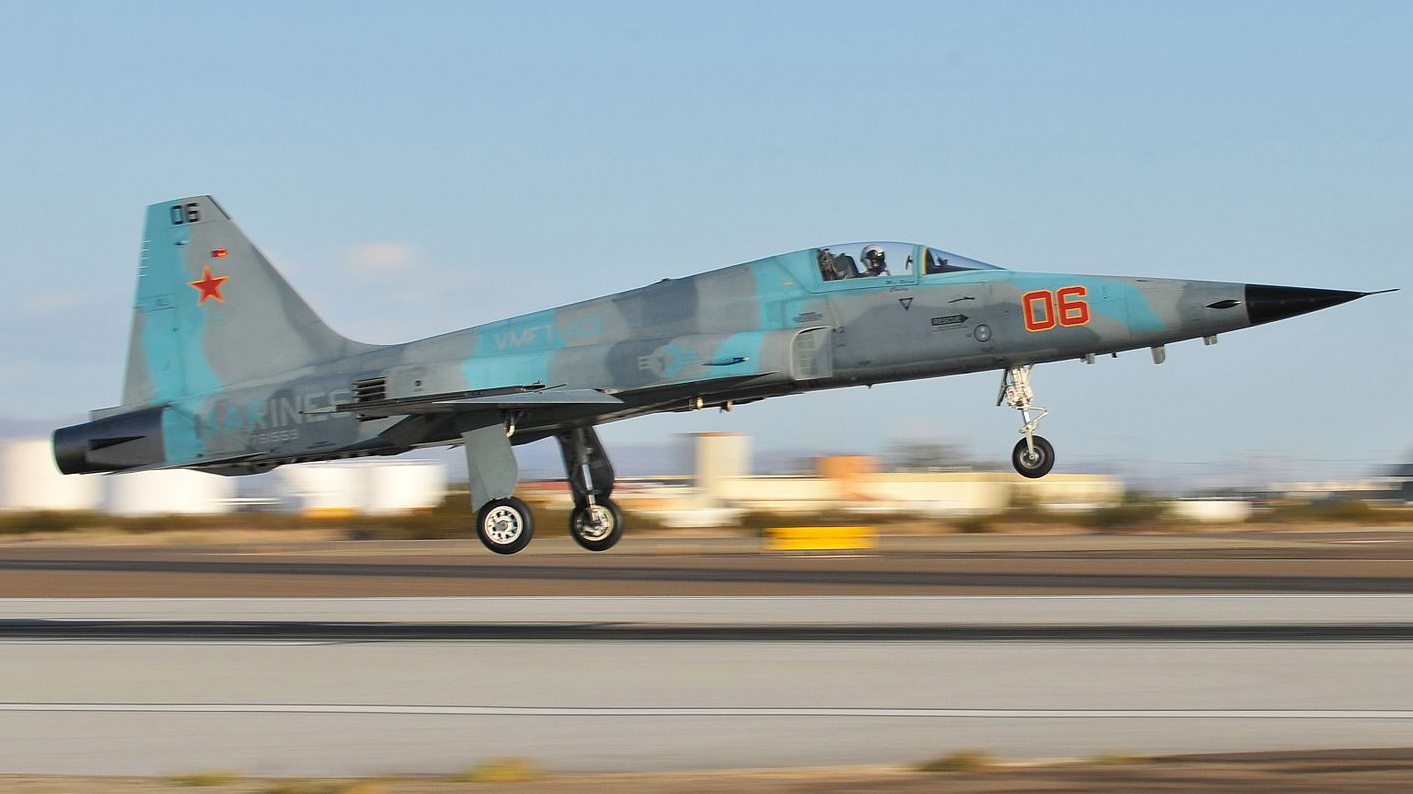
The F-5 Tiger II has been flying for the Navy in the adversary support role for 45 years. Read what it is like to fly the aircraft in this role in this past special feature of ours.
We don’t know the capabilities of this exact data link system, but it should drastically increase the F-5 adversary’s capabilities. Not only would it allow a ‘God’s eye’ view of the where the other adversary aircraft are in the battlespace and what their onboard sensors are seeing, but it could have additional capabilities. These could very likely include “synthetic radar,” where software and offboard telemetry gives pilots a radar-like picture of where their opponents are within certain parameters that simulate the limitations of enemy sensor systems. Linking the “picture” from non-fighter assets, such as ground, sea, and air-based radar systems are also features that a data link like this should be able to provide.
All the information from the data link is displayed on the tablet kneeboard, which can offer superior fidelity and adaptability over small console-mounted displays. The kneeboard tablet operating as a heads-down situational display could be able to also display radar warning receiver (RWR) and electronic warfare information, as well. It could even be able to potentially display electro-optical/infrared imagery if those sensors were bolted on to the aircraft. It’s worth noting that at least some U.S. F-5 pilots are already flying with Apple iPad mini kneeboards.
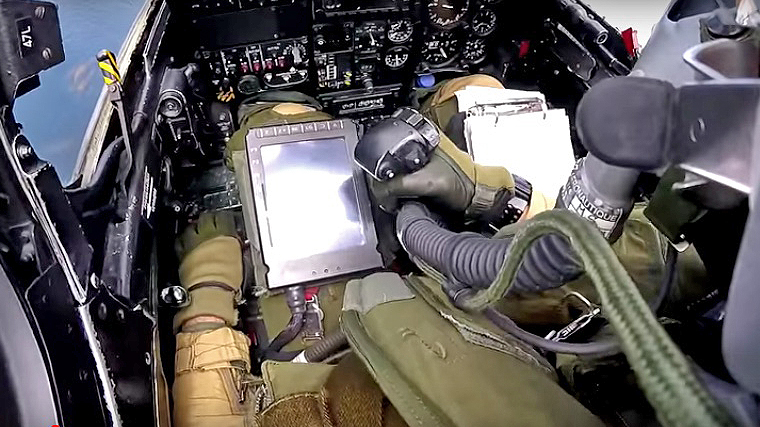
All this is software and hardware dependent, but this economical arrangement would offer the Marines a lot of flexibility when it comes to integrating new threat replication sensors in the future. Above all else, it could allow the F-5s to link with higher-end contractor operated adversary support aircraft in the future, many of which will be packing far more capable sensors than what the Marine F-5s carry today.
Just one aircraft equipped with an advanced radar in a formation could share all that info with the rest of the red air jets, acting as a huge force multiplier at a bargain price. The same can be said for information gained from infrared search and track systems or advanced radar warning and homing systems.
So, you can see why such a system is so valuable and such a value. America’s potential enemies are fully aware of this and fly with their own data link system of varying degrees of quality and capability. Having a specialized data link system for aggressor aircraft could even allow the data link itself to perform differently based on the threat profile being presented to fleet aircrews. This could be achieved via software filters, not expensive hardware changes.
The Marines’ 12 F-5N/Fs serve alongside the Navy’s F-5N/F fleet, which includes 31 jets across two squadrons—VFC-13 at NAS Fallon, Nevada and VFC-111 at NAS Key West, Florida—so it is probably very safe to assume that this upgrade is also happening across the Navy’s Tiger II fleet.
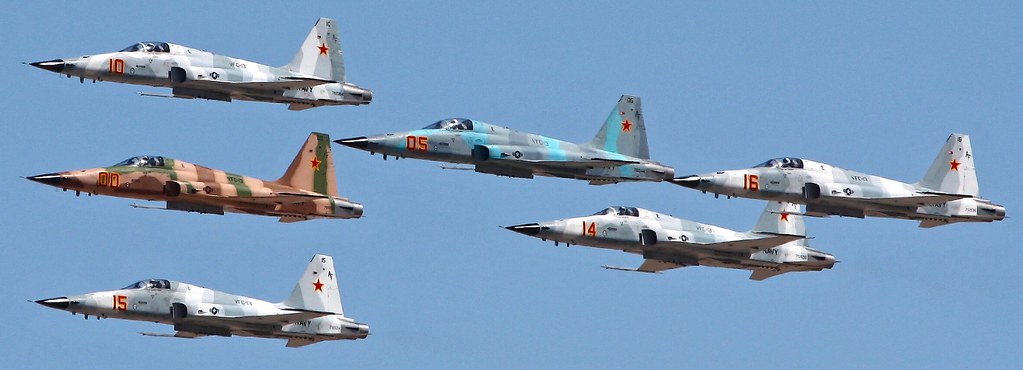
NAVAIR, which manages both the Navy and Marine Corps aircraft inventory, has requested funds to dramatically augment their F-5 fleet by purchasing 22 second-hand F-5E/Fs from Switzerland—the same place where the current fleet of F-5N/Fs came from over a decade ago. You can read all about this planned acquisition in this recent piece of ours.
The need for more F-5s to augment the current fleet is also reflected in the Marine’s 2019 Aviation Plan:
“The F-5 fleet is funded for life-limited components such as upper cockpit longerons, wings, horizontal stabilator pairs, and vertical stabilators that will enable the F-5 to achieve its planned 6000 (F-5F)/9000 (F-5N) hour life. This extends the Department of the Navy’s 43.
…
The Marine Corps [current] F-5 fleet has a service life plan that begins divestiture of current platforms in 2026.
…
Procurement of additional F-5s with significant service life remaining would provide additional organic adversary resources and expand capacity. Headquarters Marine Corps Aviation continues to assess global fighter procurement opportunities…”
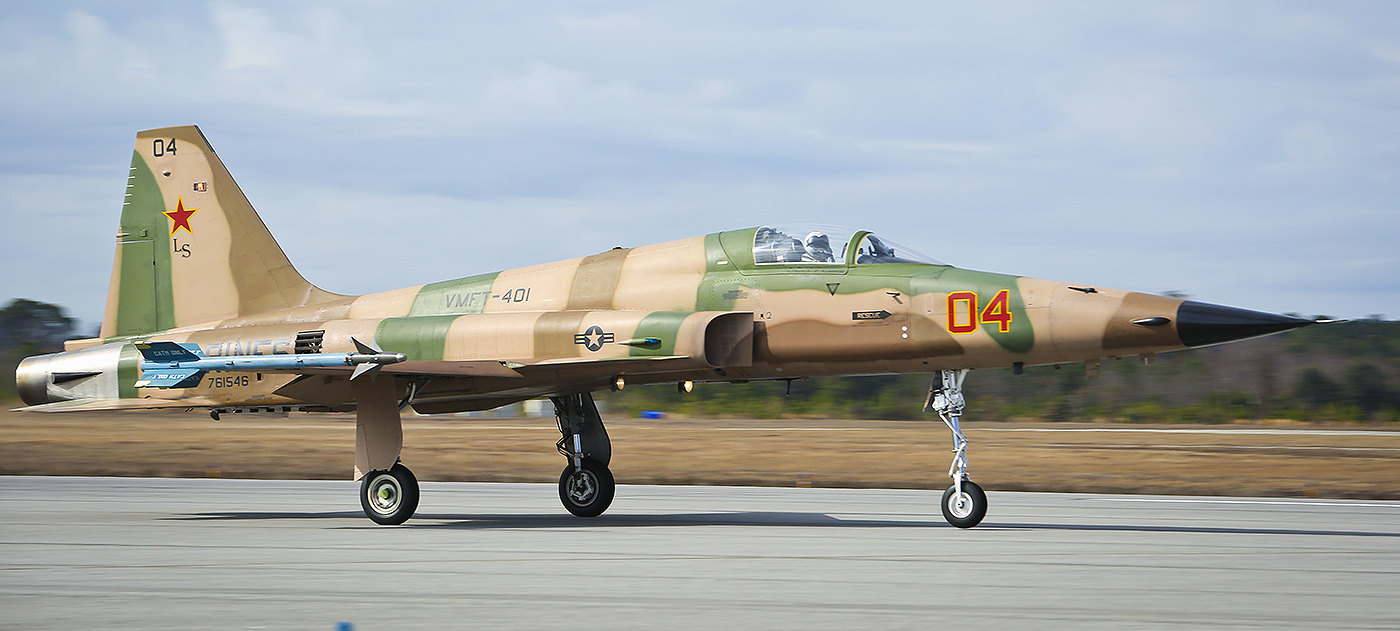
Suffice to say that the USMC and the Navy need more organic adversary capacity to support their growing F-35 and advanced 4th generation fighter fleets. These aircraft, with their AESA radars and enhanced sensor fusion, have a huge appetite for adversary aircraft. The smaller volumes of aggressors used in the past simply don’t challenge their aircrews.
USMC’s 2019 Aviation Plan makes a huge point of the rapidly increasing deficit of organic adversary support capacity:
Adversary capacity is the greatest issue in Marine Corps air-to-air training, followed closely by range availability and modernization, and training simulator capabilities. VMFT-401 can source up to 3300 sorties per year, restrained by aircraft utilization and numbers of F-5s assigned. Combining A/A requirements for fleet training, FRS [Fleet Replenishment Squadron] production and weapon school support, the USMC builds an adversary requirement of over 10,000 sorties in 2019.
Accordingly, the USMC suffers a nearly 7000-sortie capacity gap.
…
Marine aviation is working with the Navy to determine future Department of the Navy adversary requirements and to conduct analysis on future government and vendor operated solutions. The DoN adversary solution will require a solution for the increase in adversary demand and investment in upgraded capability to represent modern and future adversary threats. Current USMC adversary inventory is 12 F-5s assigned to VMFT-401 at MCAS Yuma that execute local training and detachments to away sites for training support. Marine aviation is researching the requisite manning and logistics to expand adversary capacity and capability while improving accessibility by possibly placing resources at MCAS Beaufort in support of the F35 FRS.
Expanding adversary capacity could be accomplished with either government operated aircraft, vendor-operated aircraft, or a combination of both. The current configuration and future upgrades to the F-5 do not meet all of these MAGTF [Marine Air-Ground Task Force] requirements for adversary against F-35 and FA-18, but these aircraft can effectively service many fixed-wing, rotary-wing DACM, GBAD, and C2 training needs. A combination of fleet support and investment in contracted 4th generation fighters will augment the USMC F-5 fleet in supporting high-end adversary training requirements.
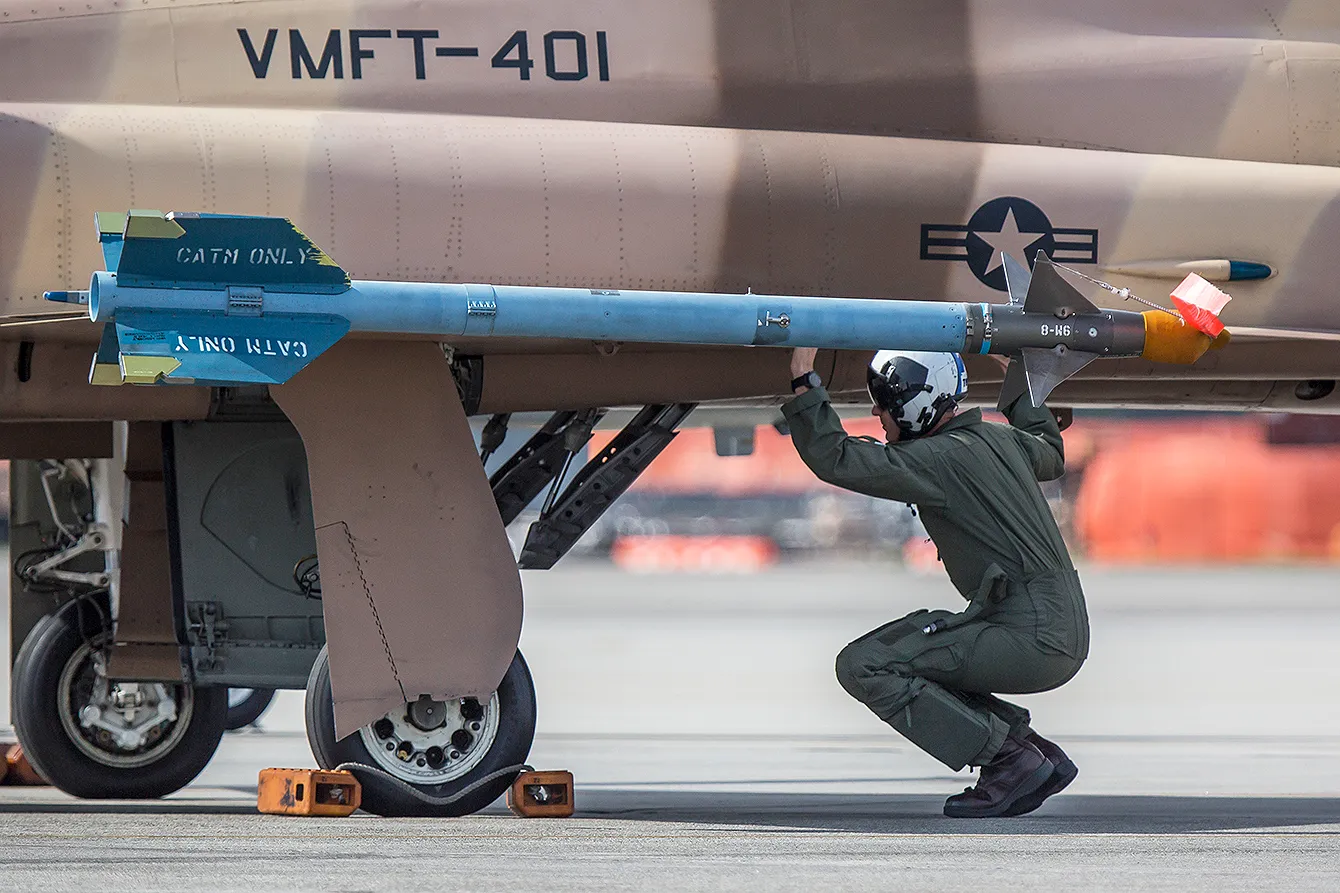
As we were first to report, the USMC has been eyeing setting up another F-5 adversary support squadron or detachment at MCAS Beaufort since 2017. Supporting F-35 pilot production is the main catalyst for this, with helping with fleet readiness training and advanced fighter syllabi coming in close behind. Even half a dozen additional F-5 airframes could potentially make this a reality. Beyond that, the Marines look ready to deeply embrace contactor adversary support on a grand scale.
What this means is that that the USMC’s F-5s will be flying with contractor operated and upgraded fighters like F-1 Mirages, Atlus Cheetahs, and yes, more F-5s, as well as other high-performance airframes, in the years to come. In fact, the Navy picked a contractor with deeply upgraded F-5s over one with F-16s for their adversary support contract at Naval Air Station Fallon recently. You can read all about why they chose the F-5 offering in this past feature of ours.
With that in mind, you can see how binding all these assets together via a proprietary “red net” data link would be absolutely essential for getting as much value out of each training flight hour as possible. And remember, this training isn’t just about dogfighting. It’s about high-speed target saturation, beyond-visual-range threat tactics representation, and learning to fight and win in an electronic warfare environment.
Amazingly, the F-5 remains just about the most economical platform available that can pull off such a mission set—albeit with the help of modern upgrades like “red net” data links.
Contact the author: Tyler@thedrive.com
